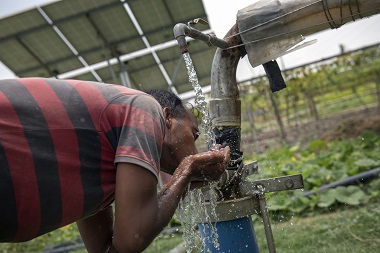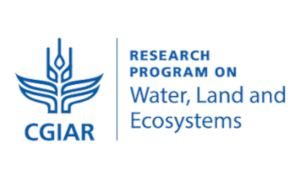Assessing the potential for solar-irrigation adoption to support small-scale irrigation development in Sub-Saharan Africa
Irrigated agriculture contributes 40% of global food production but development in Africa south of the Sahara lags behind despite its important income, food and nutrition security and resilience benefits. One key reason for the low development of irrigation is the lack of infrastructure development to support irrigation development, including roads and rail, electricity, markets, and irrigation infrastructure itself.
Solar-irrigation could help address many of the challenges of under-investment in irrigation. Groundwater can be accessed at a much larger scale than surface water that is limited to surface water bodies, such as rivers, streams and lakes or collected through harvesting of rainwater. As an alternative to hand-lifting devices, diesel and electric pumps, solar powered water pumping systems reduce labor costs, drudgery and can reach more remote areas and those not served by electric grids, which is particularly important in Africa south of the Sahara, where less than 40% of the population has access to electricity, and access in rural areas is even lower. In places without electric grid access, solar-irrigation systems can be additionally used for lighting, cooling, charging mobile phones and for operating TVs and radios.
Key research questions
- What is the physical potential of solar-irrigation in Africa south of the Sahara?
- What is the economic potential of solar-irrigation in the region?
- What are challenges and opportunities to sustainably increase solar-irrigation in the region?
Basic information about the activity
We will apply a modified two-step modeling framework to understand the potential of solar-irrigation in Africa south of the Sahara, which has been previously applied in a number of strategic irrigation planning analyses at national and continental scale.
The framework will also draw on recent solar-irrigation suitability mapping for Ethiopia by the International Water Management Institute (IWMI) and will be jointly implemented with IWMI.
The assessment consists of two steps. In the first step, we will use GIS (Geographic Information System) tools and multiple environmental criteria to evaluate land suitability for solar-irrigation development at a pixel level. This step of analysis builds on Schmitter et al. (2018). Environmental suitability criteria will include slope, groundwater level, solar irradiation, aquifer productivity, proximity to water bodies and roads, among others.
In the second step of the analysis, we will introduce additional food security, water balance and economic cost-benefit criteria to provide a refined estimate for adoption potential of solar pump-based irrigation development potential across the region.







